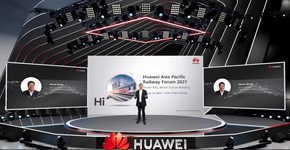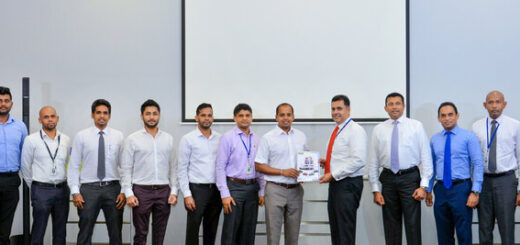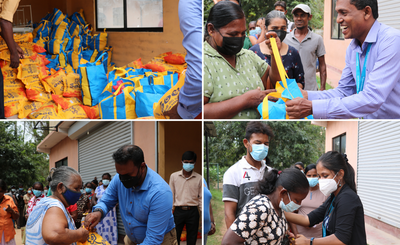Huawei Enables APAC Railway Digitalization for Sustainable Mobility
Huawei Asia-Pacific Railway Forum 2021, themed “Smart Rail, Better Future Mobility,” concluded on Friday. Participants at the forum explored the innovations to achieve operational efficiency for urban mass transit systems, particularly through driverless operations and workflow management.
The event attracted more than 1300 railway industry customers, partners, experts, and media drawn from across the APAC region. Core Huawei railway industry customers and partners — including the Hong Kong Mass Transit Railway Corporation (MTR), Singapore Mass Rapid Transit Limited (SMRT), and the professional services firm Arup Group Limited — participated in a panel discussion, sharing their experiences on the importance of achieving operational efficiency for urban mass transit systems, particularly through driverless operations and workflow management.

At the panel session of the event, Kwek Hyen Chee, Head Digital Transformation and Business Innovation, SMRT Corporation Ltd shared his observation that most people in Singapore has adapted their community lifestyle to adopt Greener transport modes and contribute their social responsibilities to sustainability by taking public transport in a city environment. “I feel the technology is ready, a challenge is how do we transform the workplace, the workforce and work processes accordingly,” he said.
Aaron Wang, Senior Vice President of Huawei APAC Enterprise Business Group, addressed the challenges that have been brought by the pandemic, noting that such challenges have also been converted into opportunities — for all industries. “As a global ICT solution provider, Huawei helps customers such as Singapore’s Land Transport Authority (LTA), Hong Kong MTR, Turkey TCDD and Germany’s Deutsche Bahn (DB) to accelerate their digitalization by integrating new technologies with traditional infrastructure. We believe railway digitalization will lead to better mobility in the future,” Wang stated.
TC Chew, Director of Global Rail Business, Arup, shared three key trends in digitalization: data, analytics, and communications. These enable us to make better decisions and support the decarbonization process that we want to achieve. “To actually maximize the technology value to the railway is down to the people who are actually applying some of these technologies and capitalizing on the data that is available to some of these technologies, if not all of them, and how we then apply a certain degree of intelligence to help us make better decisions about our day-to-day railway operations and the maintenance of our assets and the service delivery to our customers,” said TC Chew.
Changquan Luo, the Director of the Metro Station Digital Innovation Studio at Shenzhen Metro, explained the background of its digitalization strategy. It lies in the goal of meeting wider national requirements for strengthening transportation and ensuring high-quality development, focusing on digital intelligent enablement, operational excellence, and serving cities. “The Huawei ROMA platform has been used to implement data sharing services and build a converged data warehouse,” Luo said, regarding the role Huawei’s technology has played in this particular digital transformation journey. “The smart station digital platform converges and integrates services, achieving multi-network convergence from devices to the cloud. This technology helped to complete part of our Smart Station 1.0.”
In a virtual visit to its exhibition hall, Huawei demonstrated how the latest innovations in ICT are deployed in the railway industry, enabling digital transformation, from the Huawei SmartLi Uninterruptible Power Supply (UPS) to OptiX Solutions and Huawei AirEngine Wi-Fi 6. The high bandwidth offered by Huawei OptiX supports an increased number of cloud applications, with simplified Operations and Maintenance (O&M), real-time performance monitoring, and intelligent fault detection all assisting the management of a packet-switched network. Huawei SmartLi UPS delivers a battery life at least double that of traditional lead-acid battery solutions, with a highly reliable design and wider coverage for input voltage. It can also be deployed in harsh operating environments, where the mains power supply is either unstable or entirely lacking, providing a unified platform that supports access to multiple energy sources, which effectively saves customer investment.
–End–



Recent Comments